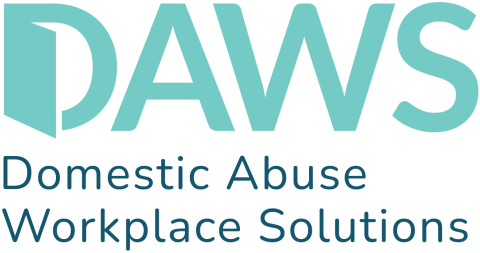Domestic Abuse Workplace Solutions (DAWS) aim to reduce the prevalence of domestic abuse in our society, address domestic abuse perpetration, and raise awareness of the powerful influence each workplace can have.
Having worked with hundreds of people using harmful behaviour in their relationships, at DAWS, we know how challenging it can be for someone to acknowledge the hurt they are causing and seek the necessary help to change their behaviour. Facing it can evoke feelings of shame, guilt, and embarrassment. It can be far easier to deny, blame, and shift the focus onto others. But recognising their behaviour as a problem, not only for the individual but for those impacted, including former partners and family too, is a crucial first step to ending the cycle of abuse.
Domestic abuse and the workplace
Domestic abuse is a societal issue requiring a societal response. With 2,307,000 people experiencing abuse last year, there is a high chance your workplace will employ people who have experienced abuse and people who use abusive behaviour. By putting not just the person experiencing abuse on your agenda, but also those causing harm, employers can make a vital contribution to protecting victim-survivors, and to hold those who abuse accountable. We spend a third of our lives at work, and an employer can have a significant impact on those experiencing domestic abuse and on those looking to change their behaviour. A job, career, and finances can significantly influence someone’s security, confidence, attitudes and beliefs.
Addressing abusive behaviours in the workplace
Domestic abuse is still a largely hidden issue that is not spoken about in our society. Often it becomes known only when it reaches crisis level. But abusive behaviours can be subtle, difficult to spot from the outside, and often normalised. Change starts with awareness. By providing specialist domestic abuse training, highlighting abusive behaviours within policies and internal awareness-raising campaigns for employees, we can start to challenge social norms which can support harmful attitudes and beliefs underpinning abuse, and thereby create safer workplaces.
Employers can create workplaces that are safe environments and encourage people using abusive behaviour to access help to change. In our recent survey, half of organisations said they had included domestic abuse perpetration in their domestic abuse policy. Where these policies exist, a ‘zero tolerance approach’ is often mentioned, with a stipulation that disciplinary action will be taken should abusive behaviour become known. However, harmful behaviour towards a partner, family members and/or children may be more subtle and might not be regarded as meeting the threshold for such action. A proactive approach such as including the Respect Phoneline among signposted resources can create opportunities to speak to someone about their abusive behaviour and help them find a local behaviour change programme if available.
Starting the conversation
Anybody can have influence over someone else’s behaviour, whether they are family, friends, or colleagues. Those in senior leadership positions, line managers, and mental health first aiders often have more opportunities to address problematic behaviours. One real-life example we provide during our workshops and training sessions is of a manager alerted to his employee moving house. This prompted curiosity. The employee had split up with his partner after frequent ‘arguments’.
Manager: “What’s been going on?”
Employee: “I said some things I regret. It’s been going on for too long.”
Manager: “Do you want to talk it through?”
In this case, the employee did want to speak about it and disclosed some of their abusive behaviour - although it was not framed as such. The manager reaffirmed the employee should take steps to address their harmful behaviour and they subsequently enrolled in a local behaviour change programme. While the employee never disclosed the full extent of their abuse, the conversation prompted engagement in a longer-term programme.
At DAWS, we take a “Recognise, Understand, Stop” approach to domestic abuse perpetration. Everyone can do their part to have an influence in addressing harmful behaviour. Here are just a few your organisation can consider:
- Raise awareness of what constitutes domestic abusive behaviour through your policies, processes and awareness raising campaigns.
- Know your local and national domestic abuse services that can provide specific support to employees over the longer term.
- Ensure your workplace creates an environment where domestic abuse is understood and attitudes that underpin it are challenged.
- Provide training which encourages discussions between colleagues at all levels of your organisation.

